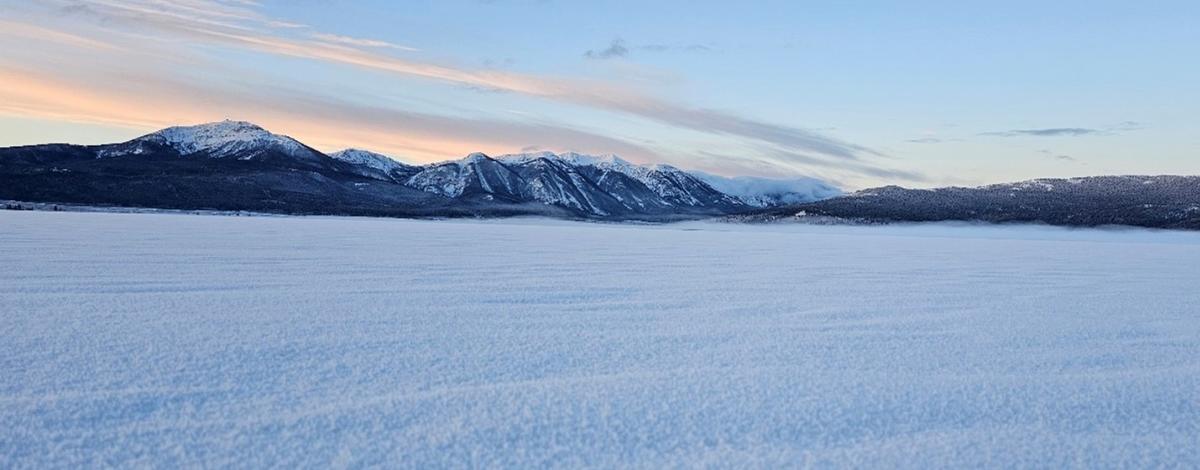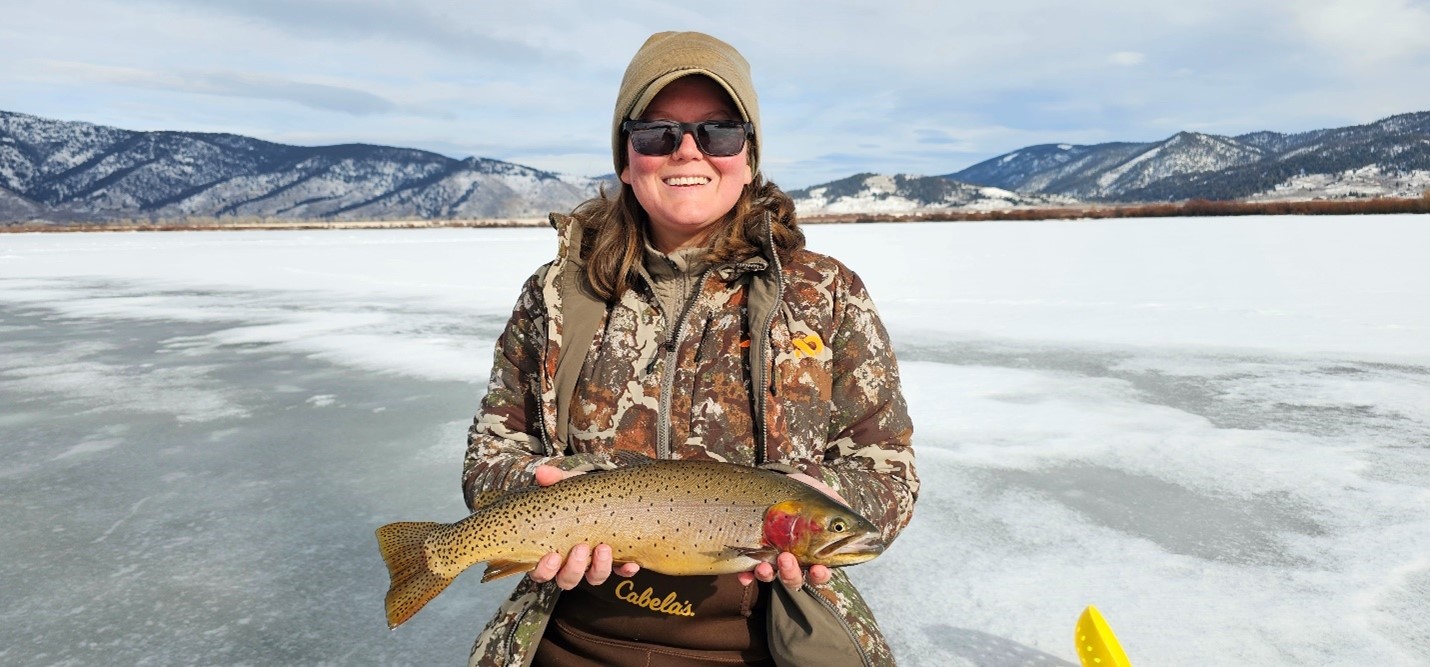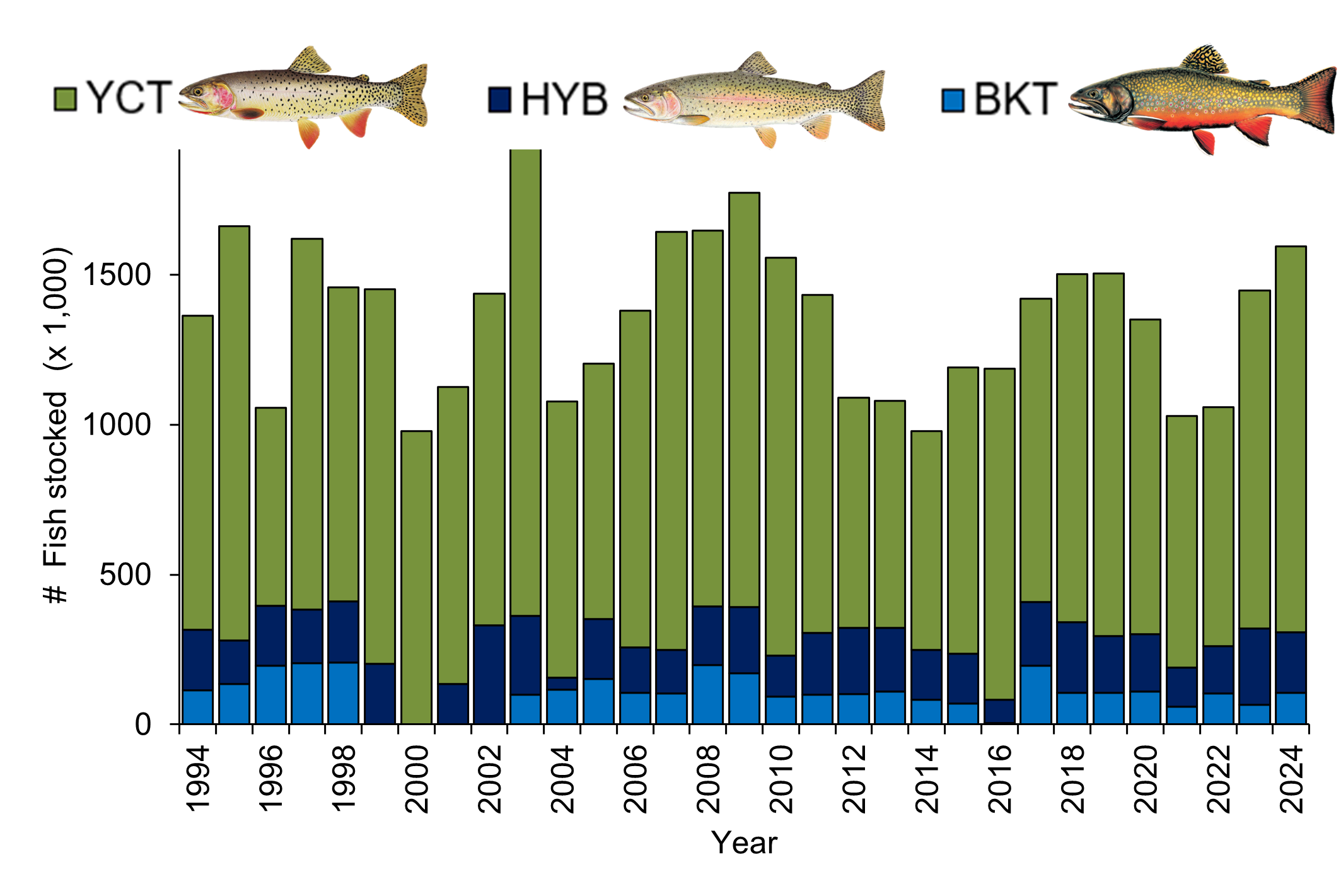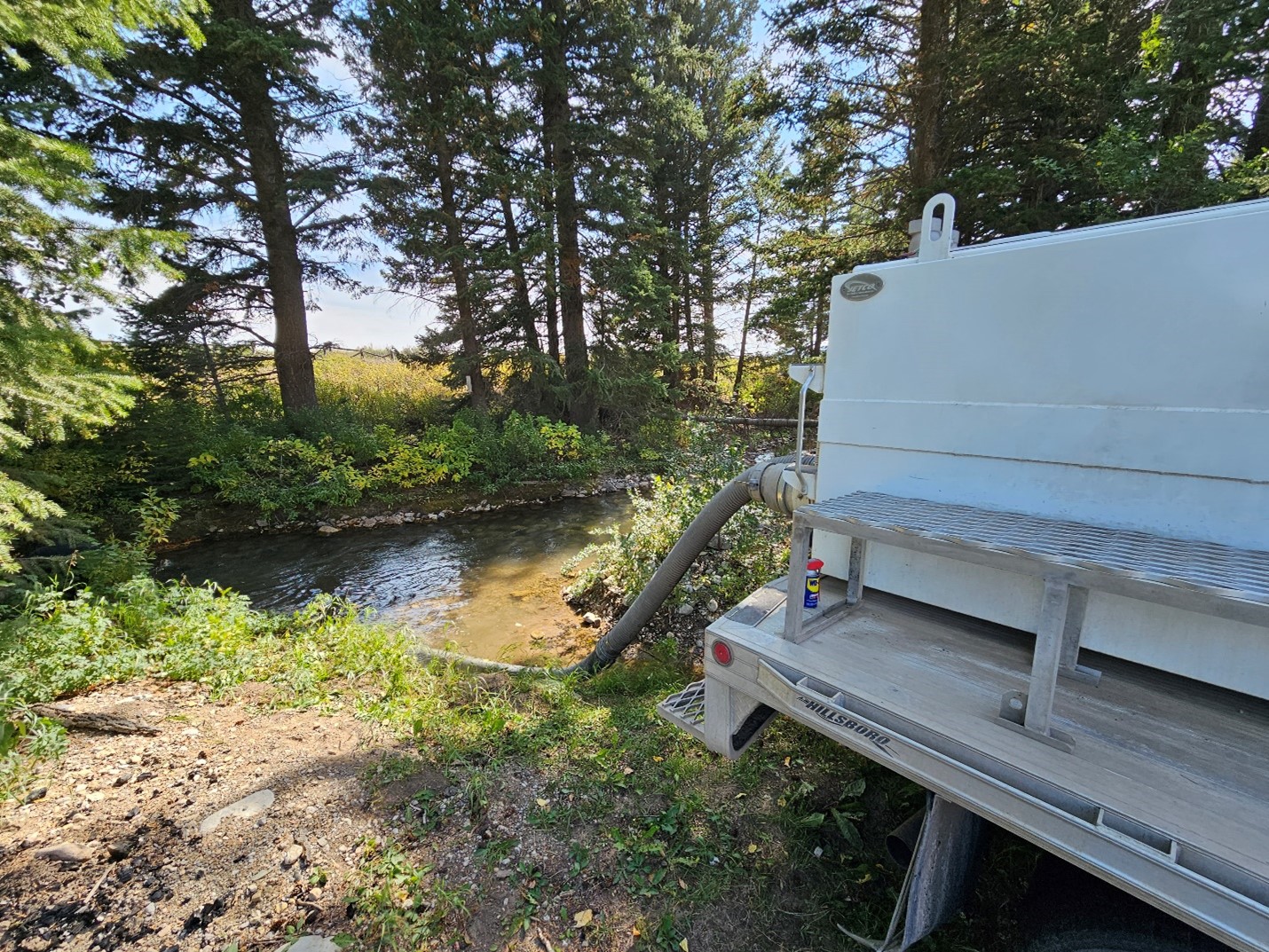Henrys Lake anglers, let’s get you caught up on recent happenings, this year’s stocking report, and much more. We’ve been busy this season, and there’s a lot to share. Let’s get into it! But first, a brief fishing report.
Fishing Report
The lake ice-capped this year on November 19, and we’ve been building ice ever since. In most places, we’re up to ~11 inches of ice, but several pressure ridges are running throughout the lake with some thinner spots near springs, so be careful! Fishing was good on first ice, with several people reporting excellent catch rates from the Outlet, State Park, and Hatchery. Catch rates have slowed considerably since then, but folks are still reliably catching fish at the Hatchery and State Park. With light snow loads, access to the State Park and Cliffs has remained open, but those locations will likely be inaccessible by wheeled vehicles soon. As access becomes more limited, don’t be afraid to go for a walk to get away from crowds, and drill several holes to find the edges of weed beds. The shallows (~2ft of water) produce fish much more reliably than people think, so don’t be afraid to try close to shore. Folks are having more success with subtle presentations lately, such as tungsten teardrop jigs tipped with plastics/bait, or worms rested on the bottom.
Remember, the trout harvest season on Henrys Lake closes on February 14th! Henrys Lake is catch-and-release only from February 15 through the Friday before Memorial Day weekend.





